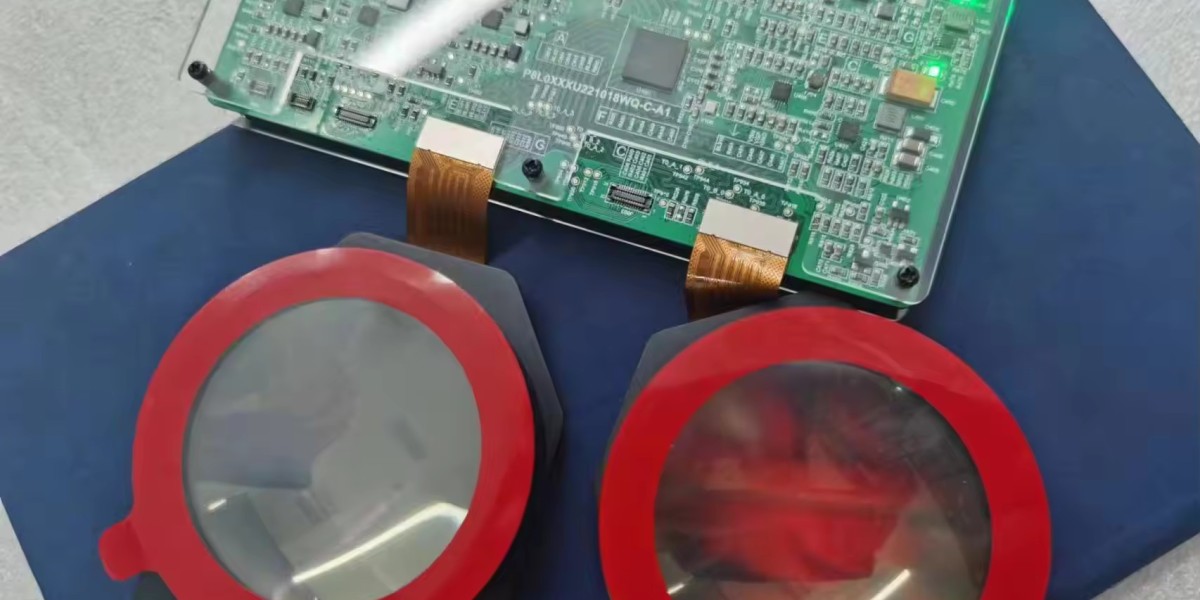The rapid rise of augmented and virtual reality has created a demand for headsets that are not only powerful but also lightweight and compact. A major innovation driving this transformation is the Pancake Optical Module. Unlike traditional bulky optics, pancake modules allow manufacturers to shrink headset size without compromising display quality.
This article explains how the pancake optical module works, its advantages, where it's used, and why it’s considered a critical piece in the evolution of immersive technology.
What Is a Pancake Optical Module?
A pancake optical module is a compact lens system used in near-eye displays (NEDs) for AR and VR. It utilizes a folded optical path, typically involving polarized light, to reduce the distance between display and lens while maintaining a large field of view.
The term “pancake” reflects the system’s flattened, compressed design—perfect for slim headsets. The setup involves multiple lens elements and a reflective polarizer to bounce light several times, effectively shortening the optical path.
Key Features and Working Principle
The pancake module includes:
Polarized Light Path: Uses linear polarization to reflect light inside the optical system multiple times.
High-Resolution Display Compatibility: Works seamlessly with Micro OLED or LCoS microdisplays.
Thin Lens Stack: The design enables ultra-short focal lengths with minimal distortion.
The display image is polarized and passed through a series of lenses and mirrors that reflect and refocus the light, delivering a large virtual image within a small space.
Benefits of Using Pancake Optical Modules
1. Compact & Lightweight Design
Traditional Fresnel lens systems are large. Pancake optics cut headset depth by 50–70%, enabling thinner designs ideal for consumer use.
2. Enhanced Image Quality
Despite the compact build, they offer wide field of view (FOV), low distortion, and sharp visuals—ideal for high-fidelity applications.
3. Thermal Efficiency
The shorter optical path allows the display to be placed closer to the user, reducing energy loss and improving power efficiency.
4. Improved Eye Comfort
Less strain on eyes due to reduced image blur and better alignment with human visual perception.
Where Pancake Modules Are Used
AR Smart Glasses: Ideal for enterprise and consumer AR wearables due to their small form factor.
VR Headsets: Increasingly used in premium VR devices that need high performance in compact shells.
Mixed Reality (MR) Devices: Pancake optics can support real-time blending of physical and digital content, crucial for MR environments.
Limitations and Considerations
Although pancake optical modules offer several benefits, they also come with trade-offs:
Light Loss: Multiple reflections may lead to lower brightness if not optimized properly.
Cost: More expensive to manufacture than simpler lens systems.
Display Compatibility: Best suited with polarized displays like Micro OLEDs—may not work well with all panel types.
Manufacturers continue to refine these systems to improve brightness and reduce cost while maintaining compactness.
Conclusion:
The pancake optical module is more than a design upgrade—it's a necessity for the next generation of AR/VR devices. By folding light paths and using advanced polarization techniques, these modules enable sleeker, more comfortable headsets without sacrificing performance.
As immersive technology pushes forward into everyday consumer markets, pancake optics are becoming a standard feature. Whether for entertainment, training, or enterprise use, their benefits in compactness, clarity, and efficiency make them a cornerstone of modern AR/VR innovation.






